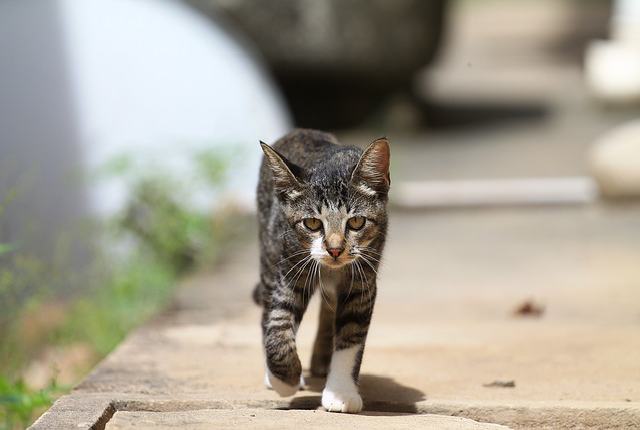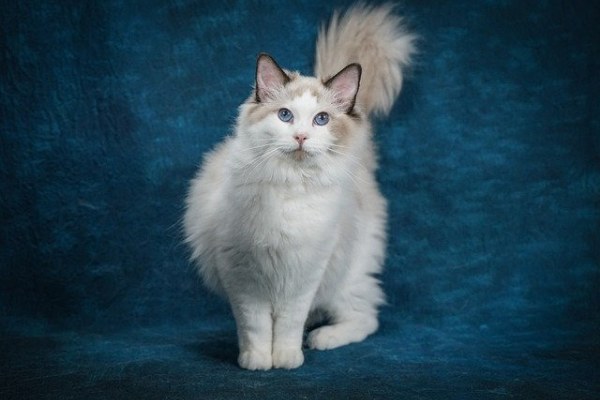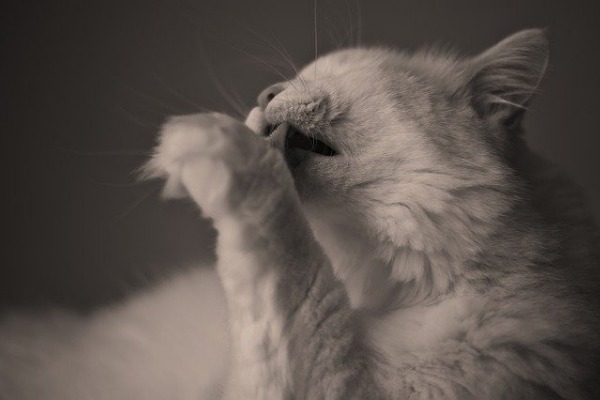Why Do Cats Chase Their Tails [9 Useful Hints]
![Why Do Cats Chase Their Tails [9 Useful Hints] Why Do Cats Chase Their Tails](https://petcreeks.com/wp-content/uploads/2022/08/Why-Do-Cats-Chase-Their-Tails.jpg)
Have you ever caught your furry feline friend chasing their tail in circles and wondered, what’s the purr-pose of this behavior?
Is it a form of play, or is there a deeper reason behind it?
We’ve done some digging into this adorable phenomenon, and in this post, we’ll explore why cats chase their tails and what it could mean for your furry friend.
So, get ready to be whiskered away into the fascinating world of feline behavior!
Why do cats chase their tails?
Cats may chase their tails for various reasons which include playfulness, curiosity, boredom or to relieve stress, and a condition called feline hyperesthesia syndrome.
However, if you notice that your cat is biting or damaging its tail, it may be a sign of aggression or a medical issue, and you should consult with a veterinarian.
For kittens and young cats, tail chasing is often a normal playful behavior as they practice their hunting skills.
Adult cats that chase their tails may be doing so out of boredom, or simply because they find the movement of their tail intriguing.
However, if your cat is otherwise healthy and happy, occasional tail chasing is usually nothing to worry about.
Let’s break it down further…
Reasons why cats chase their tails
![Why Do Cats Chase Their Tails [9 Useful Hints] Fun reasons why cats chase their tails](https://petcreeks.com/wp-content/uploads/2022/08/Fun-reasons-why-cats-chase-their-tails.jpg)
Here are some fun reasons why cats chase their tails:
1. Playfulness
Cats are energetic creatures, and playing and exercising by chasing their tails may be enjoyable.
Cats play to develop their innate hunting abilities, and tail-chasing simulates the fast motions of prey.
Even when they are not feeling playful, some cats could still like chasing their tails since it is an intriguing and entertaining pastime.
They might find amusement in chasing their tails because they find the movement of their tails to be exciting and difficult.
Due to their ongoing development, young cats and kittens may exhibit this behavior more frequently.
2. Boredom
A cat may grow bored and start looking for activities to amuse themselves if they are not given enough stimulation or attention.
Cats who are bored might pass the time by tail-chasing or participating in other enjoyable activities.
Having a lot of toys, scratching posts, and engaging playing helps lessen the possibility of bored cat tail-chasing.
3. Practice their hunting skills
Cats are instinctive hunters, and they may hone their talents by chasing their tails.
Although adult cats are less likely to indulge in tail-chasing as a means of practicing their abilities and burning off energy.
This activity is frequently observed in kittens who are still learning how to hunt.
Cats’ inherent predatory tendencies can be satisfied, and pent-up energy can be released via tail-chasing.
4. Out of Curiosity
Cats are inherently inquisitive creatures, and they could chase their tails to learn more about and investigate their own body.
They could be intrigued by how their tail moves and want to capture it to see what occurs.
Although this habit is often not harmful, excessive tail-chasing should be watched closely since it may be a sign of something more serious.
5. Anxiety or Stress
Cats who chase their tails may be anxious or under stress.
As a coping mechanism for their emotions, cats who are worried or disturbed may engage in repeated activities like tail-chasing.
In order to lessen tail-chasing behavior, the root cause of worry or tension should be found and treated.
6. Physical Discomfort
A cat may chase its tail to ease any discomfort if it is scratchy or sensitive.
Check for any indications of discomfort or infestation since tail-chasing can also be a sign of fleas or other skin issues.
Tail-chasing brought on by physical discomfort can be diminished with regular grooming and flea control.
7. Medical Issues
Cats that have certain medical problems may exhibit excessive tail-chasing activity.
For instance, hyperthyroidism may make cats agitated and energetic, which results in tail-chasing behavior.
In a similar vein, compulsive behaviors in cats can manifest as repetitive actions like tail-chasing.
Tail-chasing habit can be lessened by figuring out what medical conditions are present and addressing them.
8. Attention-Seeking
Some cats may chase their tails in an effort to attract the attention of their owners or other household pets.
They could have figured out that this behavior gets them attention or playtime, so they keep doing it to obtain what they want.
Tail-chasing behavior in cats can be lessened by giving them attention and playing on a regular basis.
9. Habit
Even after the original trigger for the activity has been eliminated, cats’ tail-chasing can develop into a habit.
This can be challenging to break, but persistently rerouting to different types of play and stimulation might aid in doing so.
Cats may be kept entertained and the possibility of tail-chasing becoming a habit can be decreased by offering a range of toys and activities.
How to prevent or manage tail-chasing behavior in cats
Here are some common ways to prevent or manage tail-chasing behavior in cats:
- Provide enough exercise: Provide your cat with enough physical activity and playtime to keep their energy levels in check. This can help reduce the likelihood of compulsive behaviors like tail chasing.
- Environmental enrichment: Provide your cat with toys and scratching posts for environmental enrichment, as a lack of stimulation and boredom can lead to compulsive behaviors.
- Avoid reinforcing the behavior: Avoid reinforcing the behavior by not giving your cat attention while they are tail chasing, as this could reinforce the behavior.
- Keep the environment calm: Keep the environment calm and stress-free, as stress can lead to compulsive behaviors and tail chasing.
- Reduce anxiety: Reduce any anxiety or stress your cat may be experiencing through the use of pheromone sprays, calming supplements, or medication.
- Use positive reinforcement: Use positive reinforcement to reward your cat for positive or normal behaviors.
- Short, frequent feeding: Feed your cat small, frequent meals throughout the day to help reduce stress and anxiety.
- Talk to your vet: Talk to your vet about any medications or behavior modification techniques that could help reduce tail chasing.
- Seek professional help: Seek professional help from a certified cat behaviorist or veterinary behaviorist if the tail-chasing behavior becomes severe or causes your cat distress.
Related questions
Why do cats chase their tails?
There can be a few reasons why cats chase their tails. Sometimes it’s just a fun game they like to play, and other times it could be a sign of boredom or anxiety.
Is it normal for cats to chase their tails?
Yes, it’s perfectly normal for cats to chase their tails. In fact, it’s a behavior that’s been observed in many different feline species.
Should I be worried if my cat chases its tail too much?
If your cat is chasing its tail excessively or obsessively, it could be a sign of a deeper problem such as anxiety, compulsive behavior, or even a medical issue.
If you’re concerned, it’s always best to consult with your veterinarian.
Can older cats still chase their tails?
Yes, older cats can still chase their tails because age is not a factor when it comes to this behavior.
Learn more about cat behavior concerns.
Will my cat outgrow the habit of chasing its tail?
Like with many cat behaviors, some cats may outgrow the habit of chasing their tails as they get older, while others may continue to do it throughout their lives.
Learn more about why your cat stares at you.
Can I train my cat to stop chasing its tail?
Depending on the underlying cause of your cat’s tail-chasing behavior, you may be able to train them to stop.
For instance, if it’s due to boredom or a lack of stimulation, providing more toys and playtime may help.
However, if it’s due to anxiety or compulsiveness, it may require some behavior modification techniques or even medication prescribed by a veterinarian.
Learn more about cats wagging their tails.
Conclusion
In conclusion, cats chase their tails for a variety of reasons, including playfulness, curiosity, and instinct.
While it may seem silly to us humans, it’s important to remember that cats have their own unique behaviors and ways of communicating.
So the next time you see your furry friend chasing their tail, take a moment to appreciate their natural instincts and playful spirit.
And who knows, maybe they’ll even inspire you to let loose and have a little fun too!

![Why Do Cats Hang Around My House [9 Top Reasons] Why Do Cats Hang Around My House](https://petcreeks.com/wp-content/uploads/2023/10/arteida-mjeshtri-XoXHijkYhPo-unsplash.jpg)




